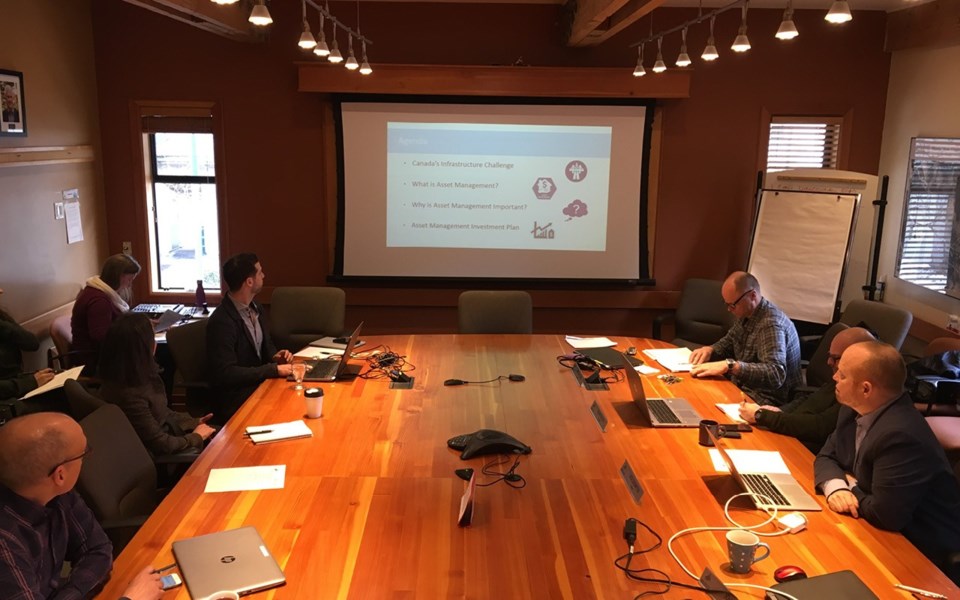The Resort Municipality of Whistler (RMOW) is doing a deep dive on its $810 million worth of infrastructure assets.
A recently completed Asset Management Investment Plan (AMIP)—funded through a grant from the Union of BC Municipalities—was detailed at the March 26 Committee of the Whole meeting.
"Every community in Canada and B.C. is talking about this exact same thing, so don't feel like you're alone," said Cory Sivell, municipal engineer with Urban Systems, at the meeting.
"At the end of the day, it's just being stewards of assets and looking into the future, and preparing for the future. Just like you plan for retirement, communities have to plan for the future of replacement of assets."
But not every community is working with $810 million in assets.
"You essentially are on the board of directors for a business that's managing $810 million," Sivell told mayor and council.
"I think that's a really fun number to share, because I find a lot of citizens don't fully understand how much assets cost, and how expensive it is to replace them."
More than half of the $810 million in assets is accounted for in the general capital fund ($429 million).
"Transportation and buildings make up most of the value ($105 million and $184 million, respectively), which is very, very common through most communities," Sivell said.
On average, Whistler's assets have about 53 per cent remaining life, Sivell said—placing it "in the middle of the pack" of the other communities he's worked with.
The AMIP's purpose is twofold, he added: understanding the health of assets today and the long-term costs of replacement.
"So how quick are they coming—is it a big wave, is it a tsunami, is there nothing and then a big wave of expenditures in 40 years?" Sivell said.
"It helps you start to understand where those costs sit."
To do so, the plan rates Whistler's assets using six metrics: replacement cost, remaining life, value consumed, deficit (the percentage of assets past their expected life, but still in service), life-cycle cost, and replacement schedule.
For Sivell's money, the deficit metric is the most important.
"People take the deficit as kind of being like a negative thing. It's actually very positive. It means your assets are lasting longer than anticipated," he said.
"So deficits are healthy to a certain point, then they start to become a little bit of a problem ... I think it's important to track and trend it."
About 13 per cent of Whistler's assets are in a deficit right now, which equates to about $107 million of the total value, Sivell said.
"You kind of take away interesting correlations, like, 'hey, seems like a decent amount of buildings are in deficit, and they had a lower remaining life,' ... It's just data, doesn't mean it's real, it just gives you things to question and it can inform decisions based on what is happening."
The RMOW's data is also broken down by components, meaning replacing individual parts of an asset—like a roof or windows—will shift the deficit.
While looking at the sheer raw data of $810 million worth of assets—all of which are slowly aging and will one day need to be replaced—can be daunting, Sivell pointed out there are different ways to pay for replacement, whether it be through debt financing, reserves or federal or provincial grants.
"The main thing to take away is that there is a bunch of capital expenditures, they're not going away, they're slightly trending upwards, and it's important to start planning today for them," he said.
Finding the right level of annual asset reinvestment—spending or saving—will be different for every community, he added (Whistler's target being somewhere between $12 million and $27 million).
But the reinvestment will shift things elsewhere in the budget, meaning elected officials will have to keep a keen eye on tax impacts.
"As a leader, you say, 'I think our taxpayers can support that,' or you're saying, 'You know what? I don't think they can,' and then you go back and you (adjust)," Sivell said.
Mayor Jack Crompton was thoroughly impressed with the plan.
"It's a seminal piece of work," he said, adding that the presentation gives him great confidence.
"I've been around for eight years, and we've done a tremendous amount of work understanding our asset management—this piece of work sets us up for long-term success, (and) to really understand it much deeper."




